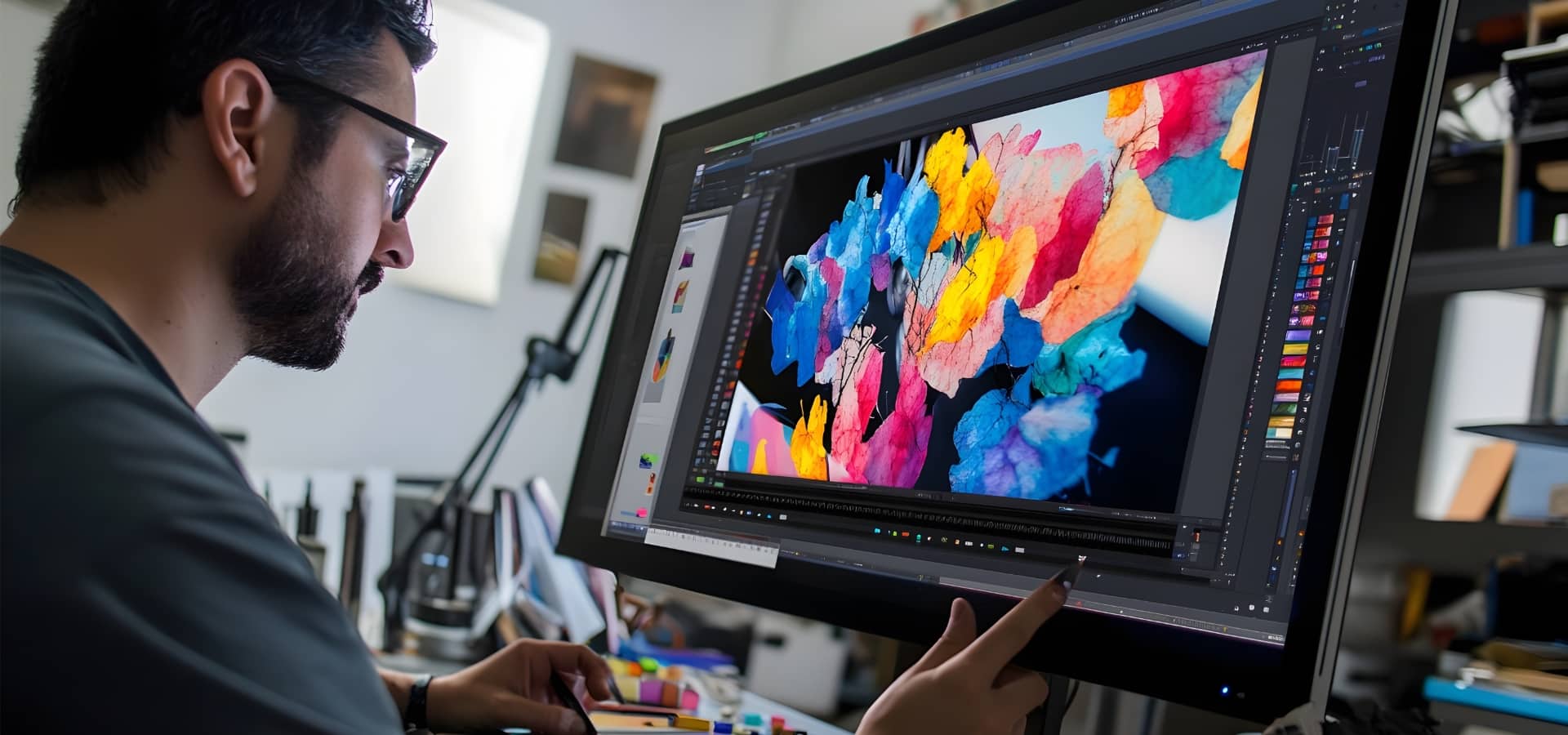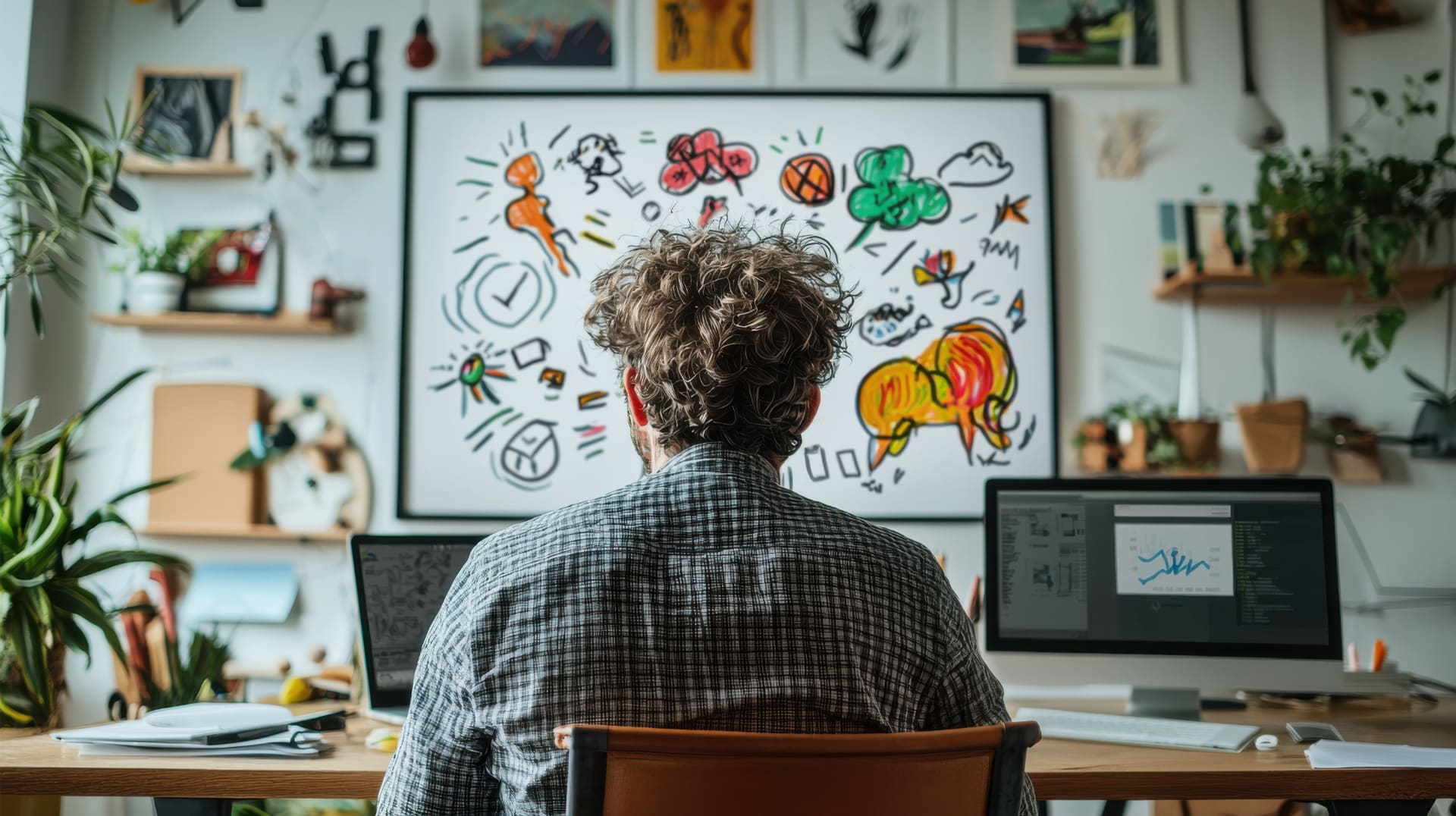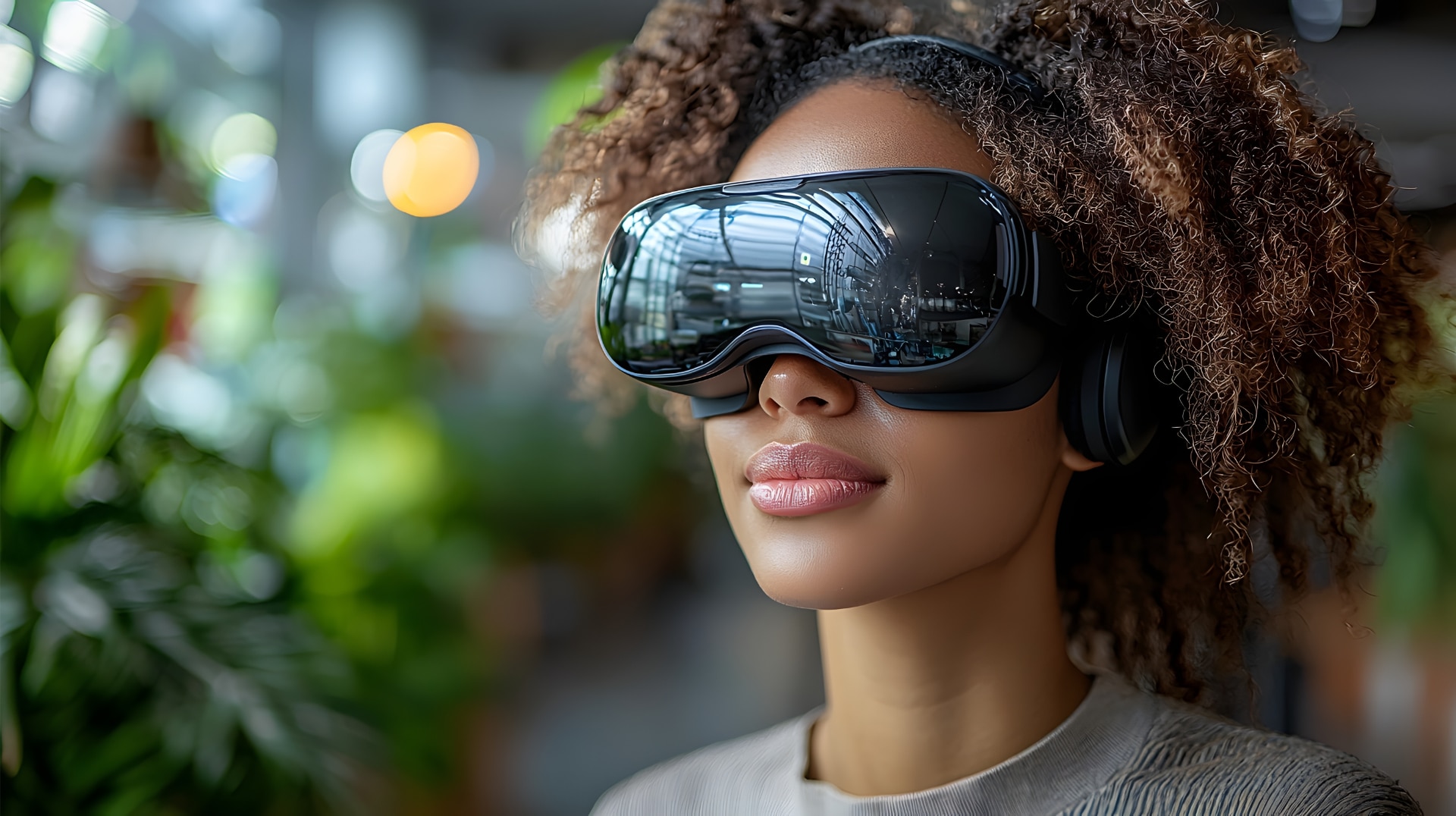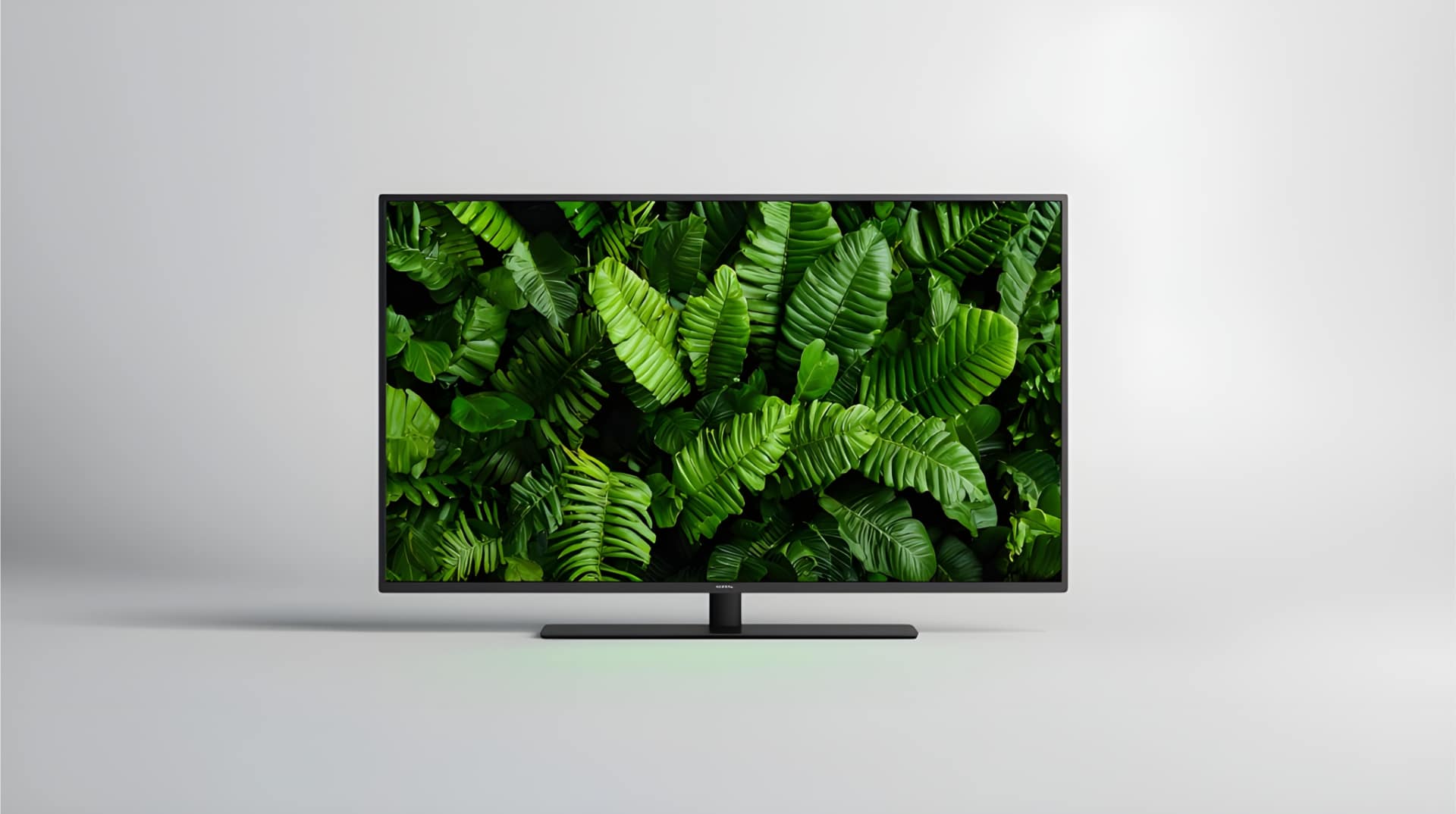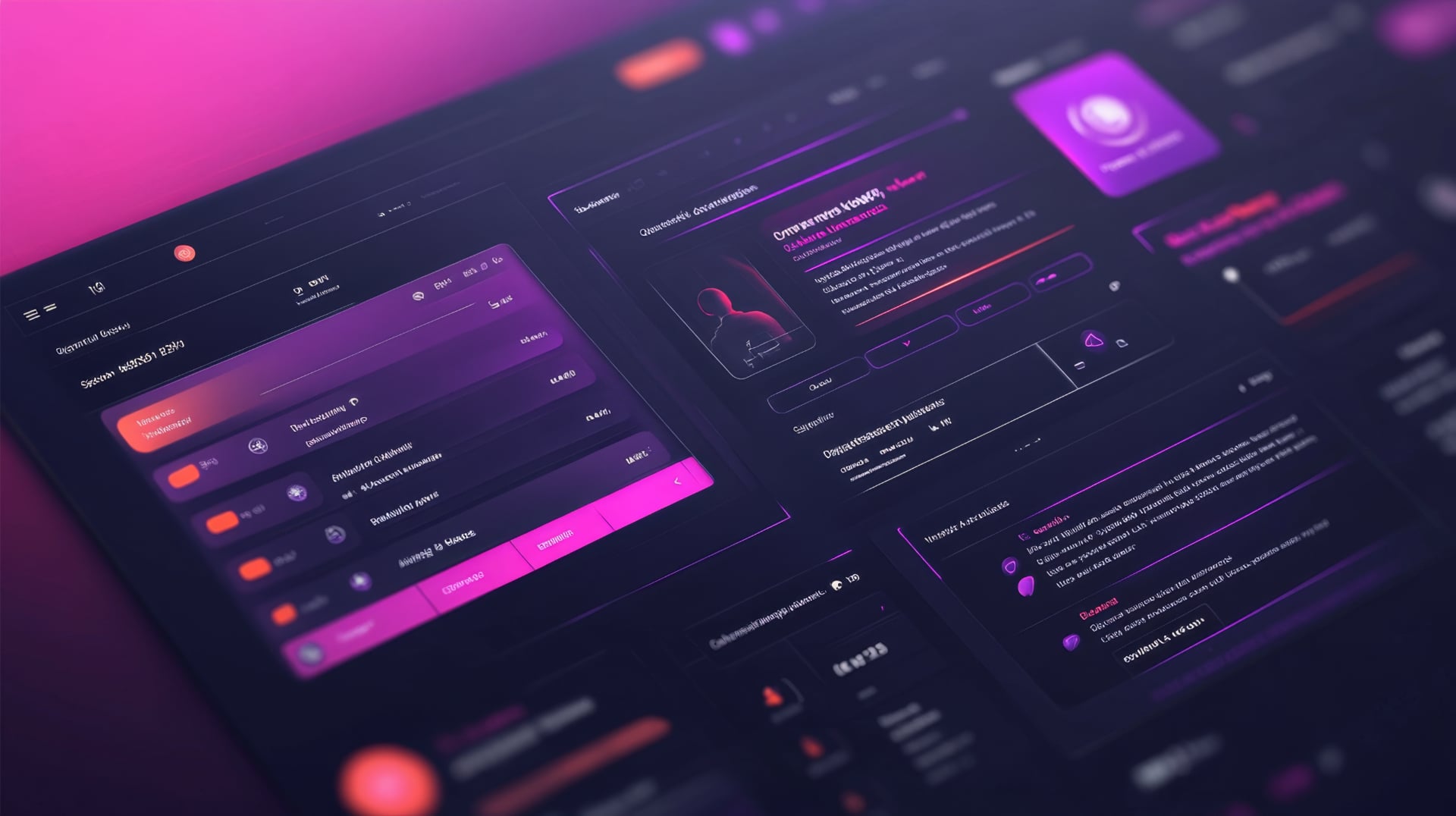AI‑Powered Designs & More: What’s Trending in Web Design for 2025
Web design never stands still; every release cycle seems shorter than the last. In 2025 artificial intelligence writes production‑ready code, container queries let layouts listen to their own dimensions, and visitors judge a site’s relevance before the first scroll finishes. These shifts are already re‑shaping the Future of UX/UI.
Below you’ll find ten AI-powered web design trends that have real‑world traction. Treat this list as a roadmap, not a manifesto, and remember that the most important deliverable is still a site that helps users finish tasks quickly.
1. AI‑Powered Web Design
Think of today’s AI tools as junior partners. AI-driven website design platforms such as Figma AI, Wix ADI, and Relume Blueprint turn a paragraph of instructions into multiple wireframes in under a minute. Designers accept, reject, or remix those drafts, then feed the updated direction back into the machine for a second round. Many teams also launch AI chatbots or virtual assistants alongside the build, letting automated support scale from day one.
The second dividend arrives after launch. Predictive analytics watch user sessions in real time, propose copy tweaks, and surface elements that never receive clicks. Sites running this kind of continuous optimization often cut bounce rates by double digits in the first quarter. That payoff explains why the best teams keep an eye on selected AI-powered web design trends and bake them into everyday workflows.
2. Minimalist and Clean Aesthetics
Minimalism is not about stripping everything away; it is about leaving only what clarifies. White space, limited palettes, and generous line heights improve comprehension, especially on small screens. Data from HTTP Archive shows that the median mobile page now weighs more than 2.5 MB, yet high‑performing minimalist sites often ship under 1 MB and still feel rich.
The nuance in 2025 is emotional warmth. Designers weave micro‑interactions, soft gradients, and playful cursor states into spare layouts so the experience feels intentional rather than austere. These touches exemplify modern web design innovations that balance clarity with personality. Clients appreciate the result because it loads fast, feels premium, and ages well.
3. 3D, AR, and Other Immersive Experiences
Screens are flattening less of the world every year. Thanks to WebGPU and libraries such as Three.js, browsers handle high-poly 3D scenes smoothly. Retailers like IKEA and Nike let shoppers drop products into their living rooms, rotate them, or swap finishes on the fly. Museums publish WebXR tours that recreate the hush of an exhibit hall for visitors thousands of miles away. Several agencies already pair generative AI scene builders with WebGL to spin up bespoke product demos in minutes.
These immersive web experiences aren’t just eye candy. Interactive product views reduce returns because shoppers know exactly what they are buying. Expect B‑to‑B interfaces to follow suit, using 3D to explain complex machinery or data flows with fewer words and greater recall.
4. Dark Mode and High-Contrast Color
Dark mode crossed the chasm from developer wish list to mainstream demand. More than four‑fifths of smartphone owners now activate system‑wide dark themes, and they expect websites to respect the preference. Implementing theme toggles is straightforward, but doing it well requires careful contrast. Charcoal backgrounds and off‑white text provide drama without eye fatigue.
High‑contrast palettes also help color‑blind or low‑vision users. That accessibility win earns credit with regulators and search engines alike, making dark mode one of the quieter contributors to performance, brand perception, and inclusive practice.
5. Voice UI and Hands‑Free Navigation
Talking to technology feels natural once friction disappears. Smart speakers have normalized voice queries, and newer browsers expose the Web Speech API as a first‑class citizen. Forward‑looking sites add microphone buttons to search bars and read results aloud when screens are out of reach.
For businesses the upside is twofold. First, voice UI and hands-free navigation expands accessibility for anyone with limited mobility. Second, content optimized for spoken answers ranks higher in featured snippets, a prime source of organic traffic. Implementing voice means structuring HTML semantically, writing concise alt text, and using schema to signal intent—all best practices that improve the visual experience as well.
6. Smart and Adaptive Layouts
Responsive design solved the desktop‑to‑phone jump; container queries solve everything in between. Components now resize based on the space they occupy, not the width of the viewport. The approach remains mobile‑first but adapts more granularly than breakpoint grids. Combine that flexibility with AI in web development, and interfaces evolve almost like living organisms.
Some e‑commerce giants go further, feeding engagement metrics into layout engines that reorder hero banners or change navigation links depending on the visitor profile. Early trials show conversion lifts that dwarf traditional A/B testing because the system adapts continuously instead of waiting weeks for statistical significance.
7. No‑Code and Low‑Code Development
Shortage of engineering talent is the mother of invention. No-code and low-code development tools let marketers, product managers, and even customer‑service teams build microsites or dashboards without writing JavaScript. That velocity doesn’t eliminate software engineers; it frees them to tackle integration, security, and performance.
Large enterprises, once skeptical, now maintain internal marketplaces of vetted components so non‑technical staff can assemble solutions that still comply with governance rules. Analysts project that by late 2025 more than seventy percent of business applications will involve some element of visual development.
A documented example: agency Wondersauce delivered Grubhub’s “2022 Delivered” microsite on Webflow Enterprise in seven weeks, handling peak traffic of 11 000 users per minute without extra engineering lift.
Fluency with at least one visual builder is rapidly becoming a résumé baseline.
8. Sustainable and Eco‑Friendly Design
Every kilobyte has a carbon price tag because data centers draw electricity and devices burn battery. Digital emissions currently rival those of commercial aviation. Sustainable web design attacks the problem with lean code, image compression, and green hosting. Performance budgets now sit beside accessibility checklists in project briefs.
Brands that publish their carbon scores earn goodwill with environmentally conscious customers, and search engines have started to weigh efficiency metrics in ranking algorithms. The happiest surprise is that sustainable web design practices often line up with business goals: lighter pages load faster, convert better, and reduce infrastructure costs.
9. Enhanced Cybersecurity and Privacy UX
Trust is the currency of e‑commerce. Phishing kits, credential stuffing, and zero‑day exploits make headlines weekly, so visitors scrutinize every checkout form and cookie banner. Design can lower their anxiety. Clear privacy language, subtle animation on lock icons, and passwordless sign‑in options signal competence without scaring away casual shoppers. Some fintechs even pilot blockchain‑backed identity ledgers so customers can verify transactions without extra credentials.
Behind the curtain, machine‑learning intrusion detectors stop attacks in real time and pass alerts to UI layers that prompt users to refresh tokens or enable two‑factor authentication. Thoughtful presentation turns these safeguards into brand assets rather than chores, proving that modern web design innovations often blend security and storytelling.
10. Hyper‑Personalization with AI Analytics
Personalization used to mean dropping a first name into an email. In 2025 it means reshaping a website for each session. Recommendation engines choose hero images, text sizes, and call‑to‑action colors based on the last five pages a user visited. Real‑time algorithms decide whether to display a discount, a social‑proof widget, or a how‑to video. Streaming giants like Netflix refresh home screens per account, illustrating how subtle tweaks drive engagement at scale.
Transparency is essential. Users respond well when personalization saves them time, and they revolt when it feels like surveillance. Successful teams therefore pair recommendation systems with clear preference centers. When done right, hyper‑personalization exemplifies the Future of UX/UI by aligning business metrics with genuinely helpful experiences.
Conclusion
Trends matter only if they solve problems. Pick three items from this list, pilot them on a small feature, and measure the outcome. A site that feels fast, intuitive, and trustworthy today will outperform a futuristic but confusing showcase every time.
Technology is fluid. AI-powered web design trends will morph as frameworks mature, privacy laws tighten, and user habits shift. And as AI in web development continues to evolve—from smarter build pipelines to autonomous testing—the toolset and best practices will pivot just as rapidly. Bet on flexibility, clarity, and empathy, and your site will stay relevant long after the current buzzwords fade.
Frequently Asked Questions
- What Are the Biggest Web Design Trends for 2025?
The ten AI‑powered shifts outlined above—ranging from adaptive layouts to sustainability—dominate 2025. - What Is AI‑Powered Web Design?
It’s the practice of using machine‑learning tools to generate layouts, copy, and imagery, then refining them with human insight. - How Is AI Influencing Web Design in 2025?
AI guides real‑time personalization, auto‑tests UX changes, and speeds prototyping across every stage of the build cycle. - Will No‑Code and Low‑Code Platforms Dominate Web Design?
No-code and low-code development platforms will handle routine sites and rapid prototypes while deep custom builds still rely on traditional stacks. - How Does Voice UI Impact Website Design?
Voice UI and hands-free navigation demands semantic markup, concise responses, and audible confirmations, making content more accessible. - How Can I Stay Updated with the Latest Web Design Trends?
Follow resources like Smashing Magazine, NN Group, Web Almanac, and attend virtual dev‑design conferences. - Is Dark Mode Still a Popular Web Design Trend in 2025?
Yes—over 80 % of users prefer dark themes, and most sites auto‑detect or provide toggles. - Why Is Sustainable Web Design Important in 2025?
Efficient pages cut carbon emissions, improve speed, rank higher in search, and reduce hosting costs. - What Role Does 3D Design Play in Modern Websites?
3D elements boost engagement and product comprehension, enabling AR previews and immersive web experiences. - How Can Businesses Integrate AI into Their Web Design Strategy?
Start with AI chatbots or analytics, then layer in AI-driven website design, personalization, and automated layout generation while maintaining clear data policies.
